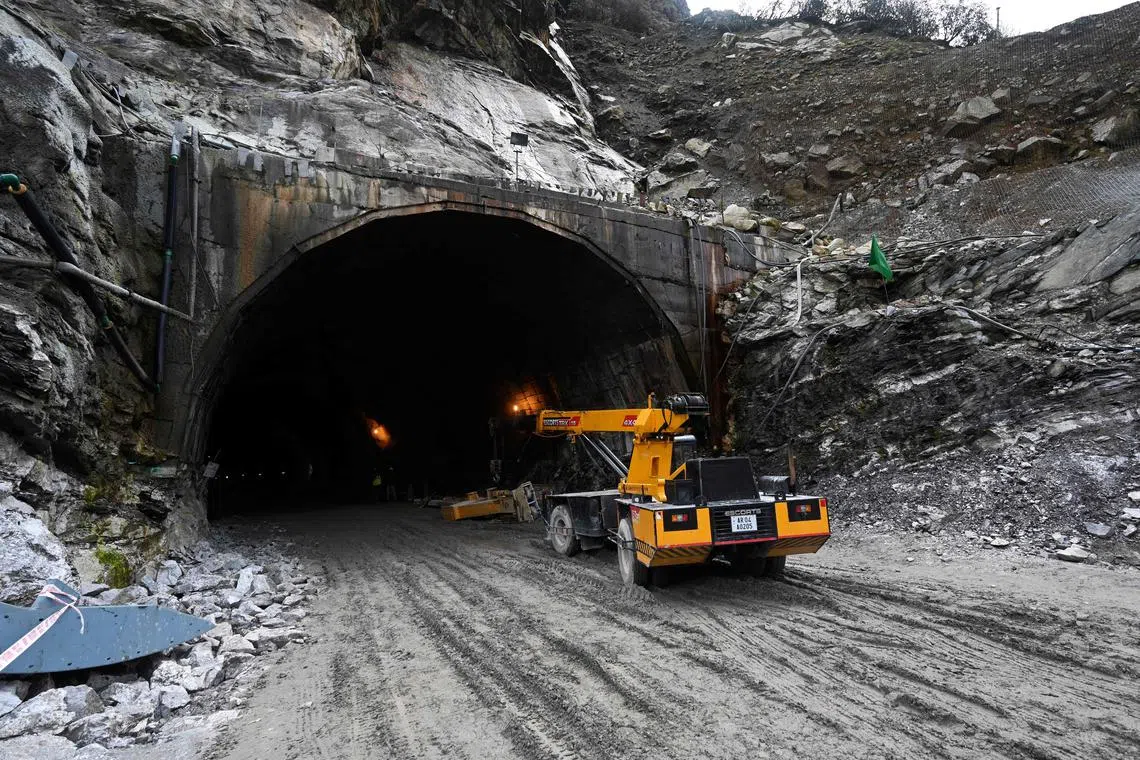India to build 2,000km highway in state bordering China
Sign up now: Get insights on Asia's fast-moving developments

A view of the Sela tunnel under construction which will lead to Tawang near the Line of Actual Control, in India's Arunachal Pradesh state.
PHOTO: AFP
Follow topic:
NEW DELHI - The Indian government is going ahead with the construction of a 2,000km highway in the north-eastern state of Arunachal Pradesh, which shares a 1,126km border with China.
China has always claimed the state in its entirety as being part of south Tibet.
Called the Arunachal Frontier Highway, the road, which is expected to help the military mobilise troops and weapons quickly to the border, will cost 400 billion rupees (S$6.5 billion), according to Indian media.
The highway, running along the border, will connect Tawang, home to the largest Buddhist monastery in the country and the birthplace of the sixth Dalai Lama, poet Tsangyang Gyatso, to Vijaynagar near the Myanmar border.
It passes through some of the remotest areas, with a government official earlier calling it “one of the toughest and biggest border road projects” in the country.
It is expected to feed into other ongoing projects for faster troop mobilisation.
The Sela Tunnel, being built at an altitude of nearly 4,000m and providing easier access to Tawang, is expected to be completed in 2023.
India and China have a longstanding border problem
China is particularly sensitive to developments in Tawang due to the monastery and has objected to visits there by the Dalai Lama.
In 2020, 20 Indian and four Chinese soldiers were killed in an outbreak of hostilities
It took over two years and 16 rounds of military talks to disengage from a majority of the friction points, including Pangong Tso, a cross-border Himalayan lake. Talks are continuing to disengage from the remaining friction points.
Indian Army chief Manoj Pande in a recent talk said maintaining a “higher level of operational preparedness at all times” and the importance of infrastructure development for quick troop mobilisation were lessons learnt from 2020.
In November, the government allotted 1.6 trillion rupees for building roads in the north-east, including 440 billion rupees for Arunachal Pradesh.
Since 2020, India has approved 32 roads along the entire border apart from upgrading and construction of 32 helipads, according to a recent parliamentary panel report.
For years, India’s policy was to keep the border areas inaccessible to slow down any Chinese incursions. While that policy changed much before 2020, China has had a head start, building railroads, a highway network and even an oil pipeline going up to the border.
Indian analysts noted that India also had different challenges.
“There is an inherent issue in comparing Indian and Chinese problems with the infrastructure along the border. The problem relates to the terrain. It comprises high mountains on the Indian side and the Tibetan plateau on the Chinese side. The Chinese found it much easier to build their highway network in Tibet, as well as a rail line and an oil pipeline,” said Mr Manoj Joshi, distinguished fellow at the Observer Research Foundation, a New Delhi-based think-tank.
“On the Indian side, the going was tough, but the roads have now come up in almost all the sectors... India is now... building tunnels to make its roads accessible even during winter.”
Still, China has continued to reinforce positions at critical points of the border, according to a 2021 US Department of Defence report and satellite imagery.
China has built two bridges over Ladakh’s Pangong Tso.
The report said that in 2020, China built a 100-home civilian village inside the disputed territory between Tibet and Arunachal Pradesh. But India media, quoting sources, said the village is in Chinese territory.
“Because of the terrain, India keeps its army forward deployed, while the Chinese usually keep their military quite far from the border,” said Mr Joshi.
“But things have changed; the Chinese have now started constructing billets and stores to deploy their forces closer to the border.”


